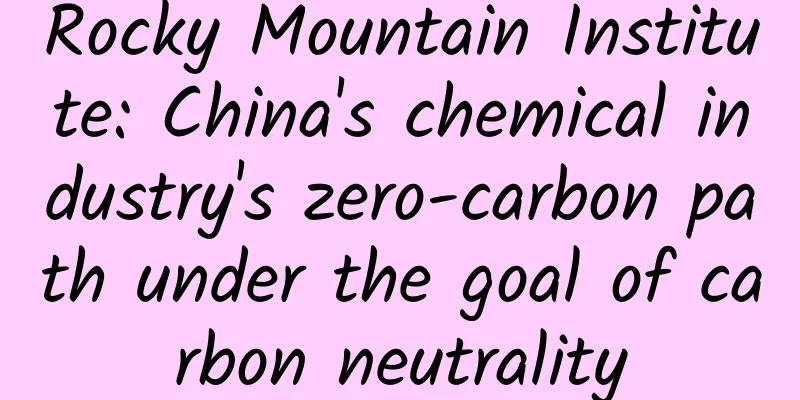Rocky Mountain Institute: China's chemical industry's zero-carbon path under the goal of carbon neutrality

|
The chemical industry is broadly defined as the petrochemical and chemical industry, that is, the oil raw material industry chain and the non-oil raw material industry chain. The chemical industry belongs to process industry III in the industrial production sector, that is, using natural resources as raw materials, through physical and chemical reactions, to produce general bulk products for non-retail circulation fields as raw materials for product industries. The upstream raw materials of chemical products mainly include natural resources such as coal, oil, natural gas, crude salt, quartz stone, etc. Due to the resource characteristics of China being rich in coal but lacking in oil and gas, the coal chemical industry accounts for a larger proportion than other countries. The chemical industry has many products, including bulk chemicals and fine chemicals. Bulk chemicals have a large production scale and a low profit level. They are at the upstream of the chemical industry chain, including olefins, aromatics, etc., while fine chemicals are deeply processed from bulk chemicals as raw materials. They are smaller in scale but have higher added value and are used in pesticides, coatings, etc. China is the world's largest producer of chemical products, and its international influence is gradually expanding. According to data from the European Chemical Industry Council CEFIC, China's chemical product output value in 2019 was RMB 10.4 trillion (EUR 1.48 trillion), accounting for 40.6% of the world's total, and sales are expected to reach 48.6% of global sales in 2030. China's chemical industry has maintained rapid growth in recent years, with an average annual growth rate of 5.2% in industrial added value from 2015 to 2020. China is also the world's largest consumer of chemical products, and its consumption is growing rapidly. According to data from the German Chemical Industry Association VCI, China's demand for chemical products in 2019 was equivalent to RMB 10.7 trillion (1.54 trillion euros), accounting for 41.6% of the global total consumption, an increase of 3 percentage points from 39.1% in 20184. China also dominates the global market share of sub-products. According to IHSMarkit data, China's consumption of synthetic ammonia, methanol and ethylene accounts for approximately 30%, 60% and 20% of the global total consumption, respectively5. Among them, ethylene consumption is the apparent consumption of ethylene monomer. If downstream products of the ethylene industry chain are included, the proportion can be further increased. For example, China's global consumption of low-density polyethylene (LDPE) accounts for 34%. The PDF version will be shared on 199IT Knowledge Planet, just scan the QR code below! |
Recommend
Tesla chairman talks about Musk: I don't think he faces any challenges
Last fall, the Securities and Exchange Commission...
The logic behind the discrimination against programmers who graduated from training institutions
[[157375]] Nowadays, there are many IT training i...
How convenient would it be to use robots to take care of you after retirement?
On September 13, the decision to gradually delay ...
Digital integration solution based on flink
1. Overview In actual privatized IoT platform pro...
Congratulations! Zhai Zhigang, Wang Yaping, and Ye Guangfu were awarded the Space Merit Medal
CPC Central Committee State Council Central Milit...
APP Packaging Party’s Business Secrets
Low threshold, zero cost and high income have led...
As APP has developed to this day, where should small and medium-sized developers go?
[[122308]] If 2010 is regarded as the first year ...
Learn sorting algorithms in Objective-C
When I was learning data structures and algorithm...
11 years ago today, the J-20 made its first successful flight! So this is what the first flight time means...
Inside Aviation Industry Chengdu Aircraft Corpora...
A complete analysis of Tik Tok content operations, just read this article!
There is no need to say much about the popularity...
How to acquire the first batch of seed users when you have no money, no people, and no fame?
In the early stages of a business , when you are ...
TSMC will continue to supply Huawei. Taiwanese media: No fear of the US
The U.S. Department of Commerce has included Hua...
Design and implementation of the 2022 Spring Festival Douyin video red envelope system
What we did Business Background During the Spring...
How programmers can quickly recover from "professional burnout"
[[152521]] Programmers' work is stressful, fa...
In fact, everyone is "love-brained"?
Love is sweet and makes people yearn for it, but ...









